Rhone Glacier, Dry Valleys, AntarcticaRhone Glacier is a small, steep, cold glacier flowing into Taylor Valley, next to Taylor Glacier and the frozen, saline Lake Bonney. It is characterised by impressive vertical and overhanging ice cliffs, subject to ‘dry calving’, which are characteristic of slowly advancing glaciers. The glacier was named after the famous Swiss Glacier, Rhonegletscher, by the geologist Taylor on Scott’s last expedition in 1910-1913. |
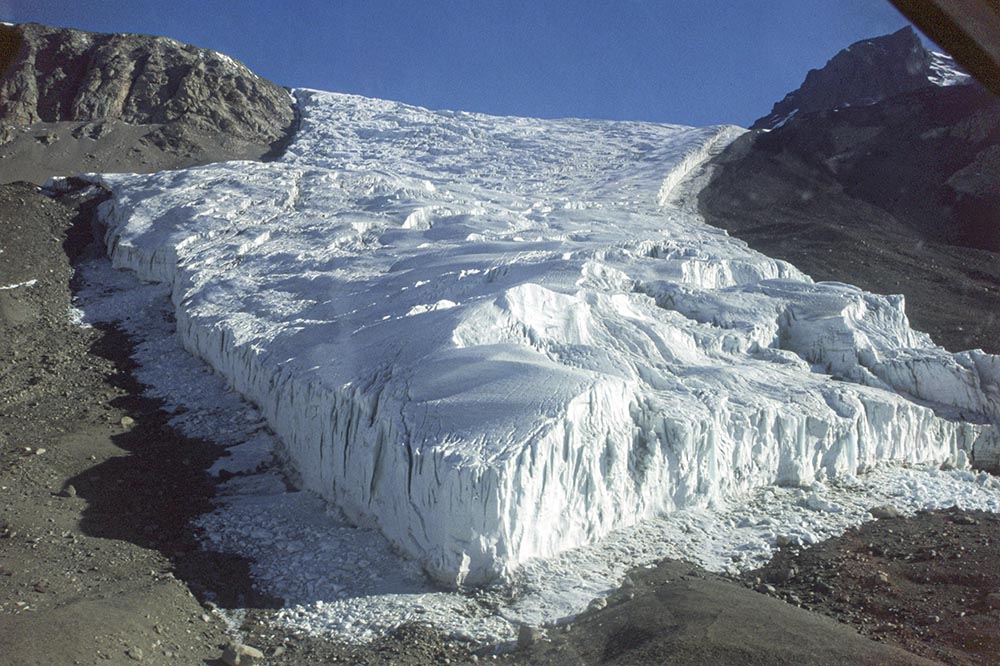 Aerial view of Rhone Glacier, flowing steeply down the side of Taylor Valley, showing rough, uneven surface, marginal crevasses and ice debris fallen from the encircling ice cliffs. | 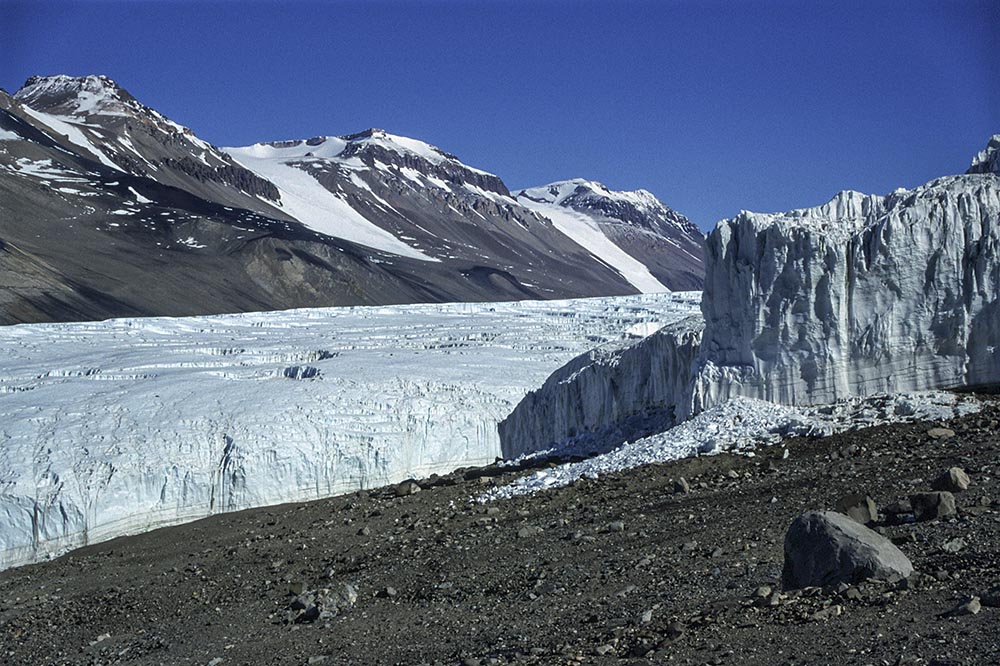 Partially shaded cliffs of Rhone Glacier contrast with the sunlit cliffs of Taylor Glacier. Small glaciers spill out from shallow cirques on the opposite valley side. The foreground is draped with wind-deflated till, from a much earlier, wet-based glacier advance. | 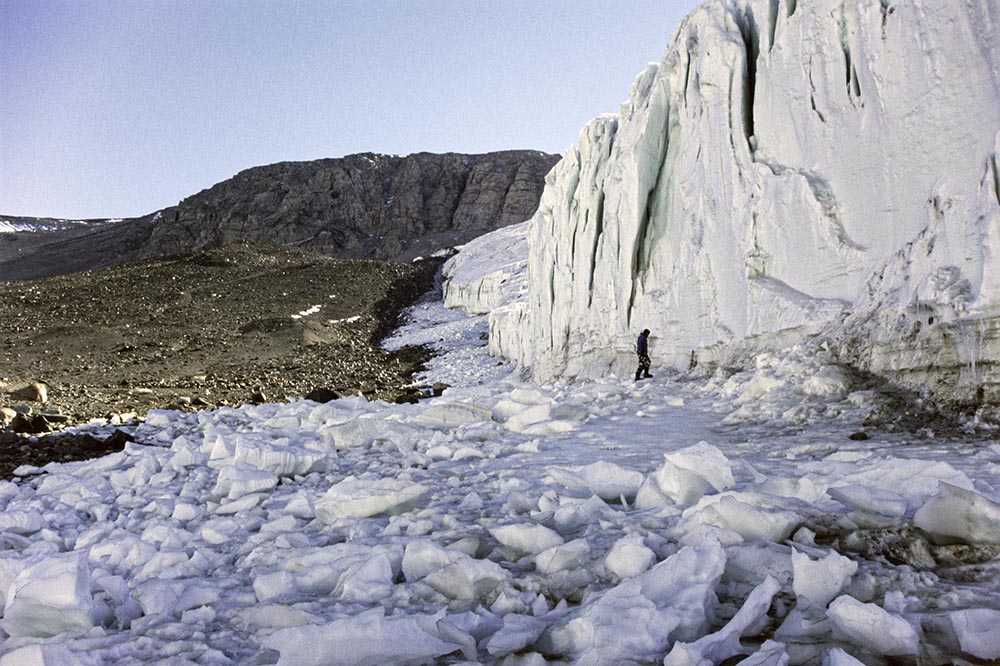 A glaciologist inspects the structure in the base of the ice cliff. Note the extensive fracturing and narrow crevasses penetrating the cliff margin. Extensive fallen ice blocks, welded together by partial melting and refreezing, litter the ground in front. | 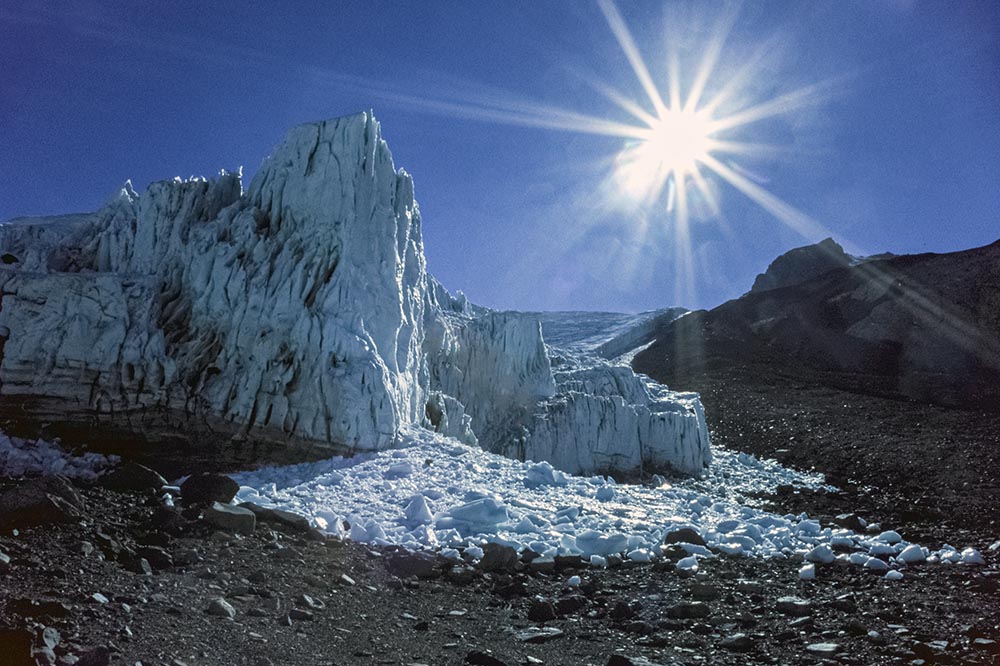 Ice cliffs at the snout of the glacier reach their maximum height of around 20 metres. Dry calving (falling ice from cliffs) produced wide fans of angular ice blocks. The ice movement is greatest towards the top of the glacier, resulting in overhangs and cliff instability. |
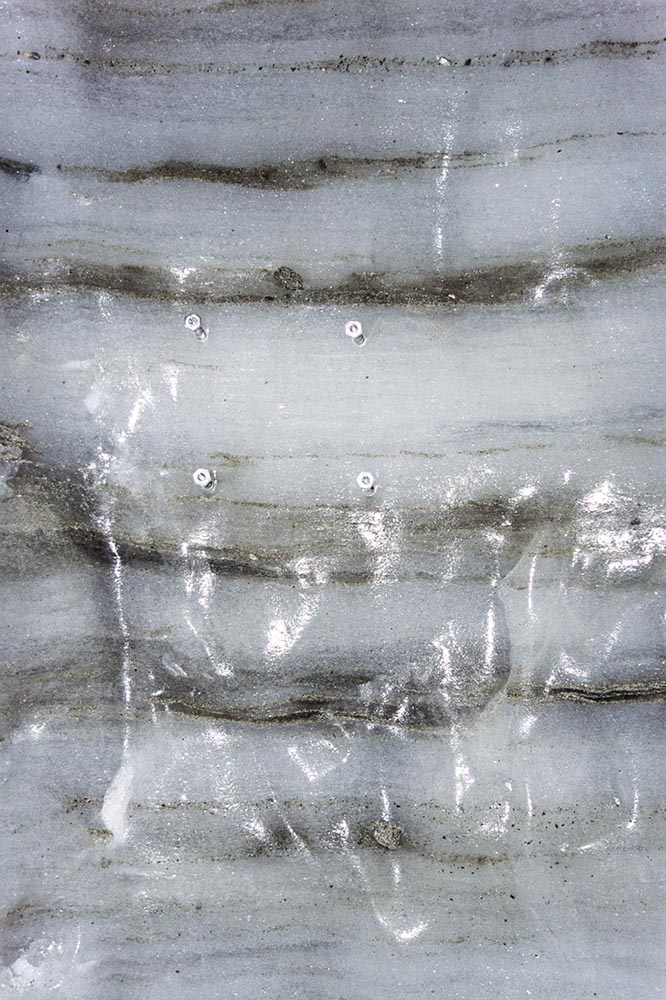 The University of Otago group cut an ice cave near the base of the glacier and inserted pegs in the cave walls to measure the deformation. The array was square a year earlier, and the relative displacement of the pegs indicates ‘simple shear’ towards the left near the glacier base. The layering is ice foliation with low concentrations of embedded debris from the base. | 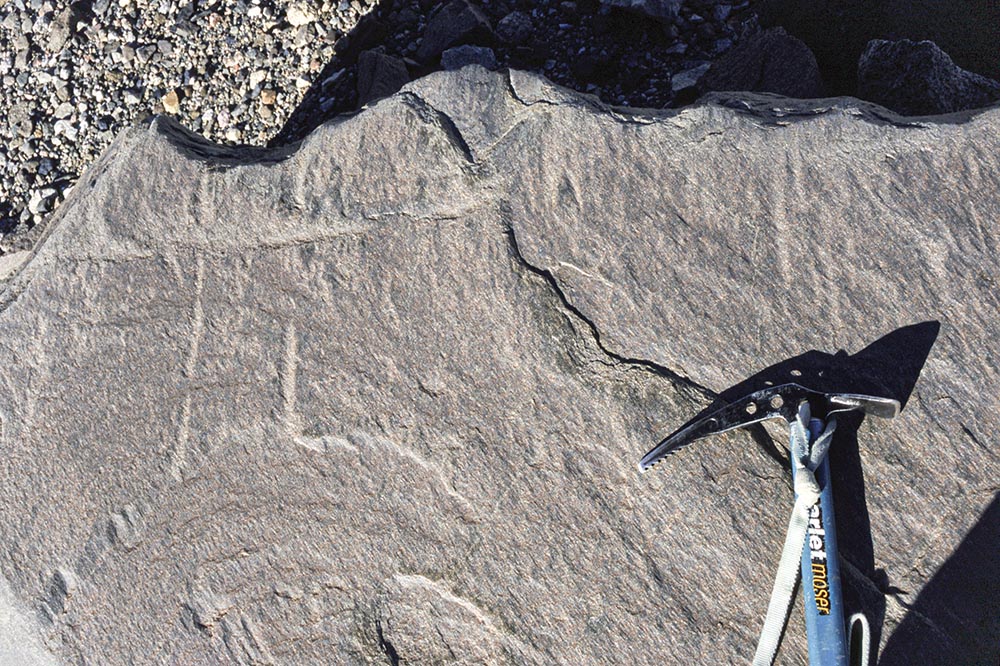 Cold glaciers are not noted for glacial erosion, but studies by a team from Victoria University, Wellington, indicated that there is abundant subtle evidence of erosion in the Dry Valleys. This is an example of glacial striations on a boulder next to Rhone Glacier. The scratch marks are roughly hewn and spaced out, so are different from striations made by wet-based glaciers. | | |